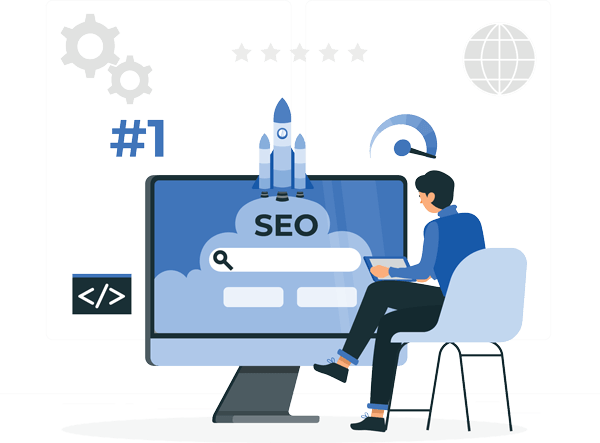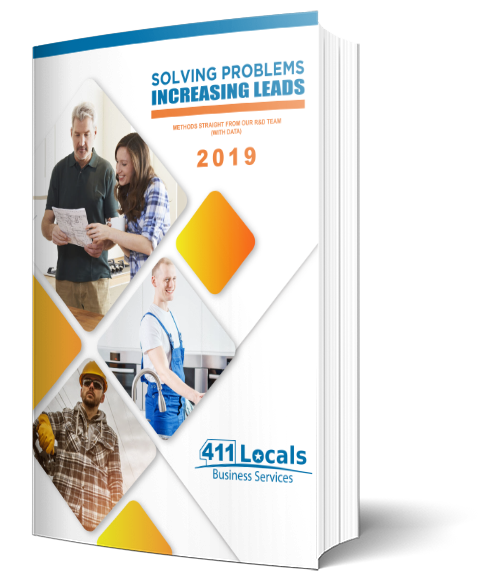How to Build a Winning Local SEO Strategy for Your Small Business

With a Local SEO strategy in place, you will be able to drive new business, boost traffic, and generate leads in the long run. Whether you have an online business that serves a specific area or a physical location, you need a strategy that helps you target localized users and searches in your area. This will help you rank higher in Google searches, beat the competition, and attract more customers.
In this guide, we will show you how to build a winning local SEO strategy so you can generate leads from local searches 24/7.
But first, you’re probably wondering what local SEO is and whether it will suit your business. Let’s dive right in!
What Is Local SEO?
With local SEO, brick-and-mortar businesses, as well as companies serving a specific geographic area, can target their products and services to local prospects and people searching for their type of business.
Let’s say you’re a local tree care company that does tree trimming and cutting. You will obviously want to show up in local search results for “tree trimming” and “tree cutting.” The process of showing up in search results for these terms is called local SEO. There are many local SEO ranking factors that help you reach the top of search results, and we will cover the main ones below.
Error: Contact form not found.
</div><!-- [et_pb_line_break_holder] --><script><!-- [et_pb_line_break_holder] -->var wpcf7Elm = jQuery('#ebook3').closest('.wpcf7')[0];<!-- [et_pb_line_break_holder] -->wpcf7Elm.addEventListener( 'wpcf7mailsent',<!-- [et_pb_line_break_holder] -->function( event )<!-- [et_pb_line_break_holder] -->{ __ss_noform.push(['submit', null, '6ae6ba88-758e-4181-8889-06095a9d9cf9']); },<!-- [et_pb_line_break_holder] -->false );<!-- [et_pb_line_break_holder] --></script><!-- [et_pb_line_break_holder] --><script type="text/javascript"><!-- [et_pb_line_break_holder] --> var __ss_noform = __ss_noform || [];<!-- [et_pb_line_break_holder] --> __ss_noform.push(['baseURI', 'https://app-3QNJT3HPB0.marketingautomation.services/webforms/receivePostback/MzawMDE3NzQ3AgA/']);<!-- [et_pb_line_break_holder] --> __ss_noform.push(['form', 'ebook3', '6ae6ba88-758e-4181-8889-06095a9d9cf9']);<!-- [et_pb_line_break_holder] --> __ss_noform.push(['submitType', 'manual']);<!-- [et_pb_line_break_holder] --> </script><!-- [et_pb_line_break_holder] --><script type="text/javascript" src="https://koi-3QNJT3HPB0.marketingautomation.services/client/noform.js?ver=1.24" ></script>
What Types of Businesses Need Local SEO?
- Cleaning companies
- Plumbers
- Landscapers
- Auto dealers
- Tree contractors
- Painters
- Movers
- Roofers
- Handymen
- Roadside assistance and towing companies
- Real estate companies
- Bars and restaurants
- Law offices
- Local contractors, remodelers, and builders
- Medical service providers
- Stores and boutiques
- Hair and nail salons
- Home inspectors
- Limo service providers
- Massage therapists
- Coffee shops
- Local consultants
- Manufacturers
- Museums
- Photographers and videographers
- Hotels and casinos
- And any other location-based business that wants to be found!
What Are the Benefits of Local SEO?
- More traffic to your website
- Higher website authority
- More customer reviews
- Increased online visibility and brand awareness
- More interested leads
- Reduced advertising costs
- Build trust with locals
- Gain repeat customers
Local Businesses and COVID-19

If there’s one thing that the COVID pandemic made abundantly clear in 2020, it is that now is the time to focus your effort on securing your local market rather than looking into a broader expansion. Service-based businesses will have to rethink their product supply chain and focus on promoting their service locally, in neighboring counties, and strengthening their relationship with past and current customers.
How to Build a Local SEO Strategy for Your Small Business
- Choose the Terms You Want Your Business to Rank for
- Audit Your Current Website
- Do Competitor Keyword Research
- Identify the Geo-Specific Keywords You Want to Compete for
- Match the search intent of people
- Have a large monthly volume
- Reflect your actual service/product
- Update or Rewrite Your Content With the New Keywords
- Optimize Your Website
- Keyword mapping
- Optimizing Metadata
- Creating Quality Content
- Internal and External Links
- Image Optimization
- Concise URLs
- Create Localized Landing Pages
- Set Up and Optimize Your Google My Business Listing
- Submit Your Company Info to Online Business Directories
- Dive Into Link Building to Boost Authority
- Generate Customer Reviews
- Participate in Your Local Community
1. Choose the Terms You Want Your Business to Rank for

These and other questions will help you identify the key terms you want your business to rank for.
Let’s look at an example. If you have a handyman company, you will obviously want to show up in local searches for terms like “home repair” and “handyman service.” Similarly, if you run an appliance repair business, you will have to focus on terms like “washer repair,” “oven repair,” and “fridge repair,” to name a few.
If you work both with homeowners and businesses, you might want to diversify even further by adding “residential” and “commercial” in front of the search terms.
Make a list of all related terms you can think of, as this will be the starting point for your keyword research (more on that later). In points 3 and 4, we will show you how to do basic research to identify the most beneficial set of keywords for your company, given your products and services. We will look into factors like search volume and keyword difficulty.
2. Audit Your Current Website

Before jumping into keyword research and optimizing your website, you have to make a realistic assessment for any technical issues that can hinder its success. As much as you want to start publishing new SEO content, promoting your business, and getting fresh leads from it, you need to take a step back.
How to perform a website audit, you may ask.
There are a myriad of free and paid tools you can use, ranging from simple reports to more comprehensive audits. A great starting point is Website Grader or Sitechecker to get an overall idea of what is working, what needs to be improved, and what you should remove. Both tools explain what each term means, so don’t feel overwhelmed when you first see the audit reports. Understanding the main components is easier than you think.
3. Do Competitor Keyword Research

SEO tools like Ahrefs and Semrush can help you do thorough analysis of your competitors to see the terms, where they rank, the domain authority of their website, and who is linking to their web pages, among other things.
No matter which SEO tool you choose to use for the competitor keyword research, the first thing you’ll see is a list of keywords that the website is organically ranking for. You can then look at each keyword and analyze its search volume and relevant metrics to decide whether it would be a good fit for your own website.
Don’t forget your main focus: keywords that fit your service or products and ones that reflect what your business is about as a whole. Your goal isn’t just to rank for good keywords. Your goal is to generate localized, relevant traffic to your website.
4. Identify the Geo-Specific Keywords You Want to Compete for

No matter what everyone says, you need to choose keywords that:
- Match the search intent of people
“Hire landscaper” instead of “landscaper,” for example.
How do you know that a person typing in “landscaper” isn’t interested in becoming one rather than hiring a professional to mow their lawn? Be very clear about what you do through the keywords you target. No need to go for ones that lead traffic of uninterested visitors your way.
- Have a large monthly volume
There are a bunch of free and paid tools you can use to search for beneficial keywords. Some of those are Google Search Console, Ahrefs Keyword Explorer, Google Keyword Planner, Moz Keyword Explorer, KeywordTool.io, and many others. There is no set volume you need to look out for — it solely depends on the overall search for your industry for your location!
- Reflect your actual service/product
Let’s say your business only focuses on lawn care. Choosing keywords related to landscape design will, therefore, be misleading and not reflective of your service. Stay away from those traps because they can easily backfire.
Now that you have selected the main terms, you need to add your location to your keywords.
Since we are talking about local SEO, the whole point is in you advertising your business to people in your service area. This means adding your location together with the keywords you want to rank for, as well as phrases like “near me.”
If you want to target “affordable tree service,” for example, you can add variations like “tree trimming Krum, TX” and “tree trimming service near me.” Those keywords often have lower search volume, but that shouldn’t discourage you because it comes from users with the intent of converting.
5. Update or Rewrite Your Content With the New Keywords

Your keyword should ideally be in the URL of your page, in its title, meta tag and description, headings, image alt attributes, and the general body of the content. To make sure you haven’t overused your keyword, do this simple calculation:
(Number of words in the content of the page) / (Number of times the keyword appears in the content)
The result should be less than or equal to 2. That is the allowed percentage of keyword usage that Google likes to “see.”
6. Optimize Your Website

Now, there are several crucial steps in optimizing your website:
- Keyword mapping — the process of planning which keywords you will use for each page of your website. Ideally, there will be a target keyword for every page that is relevant to the content of that page.
- Optimizing Metadata — every page of your website has a page title and a meta description. This is the information that users see in search results. The goal of the meta title and description is to offer a brief summary of what the page is about, thus prompting users to visit the website. It’s important to include your target keyword in your meta description and title.
- Creating Quality Content — the backbone of any successful website optimization project is original, quality content. Focus on creating content that explains your product or service in detail, and don’t forget to dedicate a page with more information about your company, your story, your values, and your goals.
- Internal and External Links — the process of building and earning links on your website is called link building. It is important that you not only have outside websites link to yours but that you link internally between your pages. For example, you need to have links to your Contact Us and Blog page on your Homepage. This is considered internal linking, and it’s crucially important to do it.
- Image Optimization — when it comes to content optimization, that includes the images on your website as well. No matter how visually enticing your images may be, they are all the same to search engines. To make sure they like them too — you need to add keyword-rich alt text. This “tells” search engines what the image is about, and it also shows in case the user can’t load the image on their device. In addition to that, you need to be mindful of the image file size and name. This ensures that browsers can quickly render images and that crawlers can decipher what’s on the image better.
- Concise URLs — in local SEO, and SEO in general, everything that’s on the page matters to your optimization efforts. That includes the URL of the page. The rule of thumb is to use your target keyword and keep the slug as concise as possible. If the page is about your auto repair service, then the URL of the page will likely look like this: www.domain.com/auto-repair. For example, our web page dedicated to our local SEO service simply says: https://411locals.com/local-seo/
When it comes to using your website to generate leads for your small business, there is a lot more you can do. We have covered the topic in detail in our blog titled How to Use Your Website to Generate More Leads for Your Business. Take a look to learn more!
7. Create Localized Landing Pages

In addition to keywords, the most important aspects of a well-performing landing page are using optimized H1, H2, and H3 headings, internal links, and making sure the page is just as responsible on desktop as it is on mobile search.
If you want to expand your local SEO strategy and rely not only on organic traffic but paid search as well, you can run ads to these landing pages as well. Make sure to have a compelling call-to-action that is to-the-point and universal across the page.
8. Set Up and Optimize Your Google My Business Listing

We have a separate guide on how to set up your Google My Business profile and optimize it properly.
Error: Contact form not found.
9. Submit Your Company Info to Online Business Directories

Choosing which directories to join should depend on your industry and niche, as some platforms are highly specialized. It wouldn’t make sense to promote your plumbing business on TripAdvisor, but it will surely do you good to submit your company details to HomeAdvisor or Angie’s List. On the contrary, if you offer boat rentals, it would make sense for you to be on TripAdvisor as opposed to Angie’s List. Do you understand the difference? Great!
We have written a detailed guide on how to use online directories and how to choose the right ones for your business.
10. Dive Into Link Building to Boost Authority

When it comes to earning backlinks from sources outside your website, there are a few ways to approach that. You can earn links from directory submissions (they always link back to your website), reaching out to other relevant websites and business partners, and creating guest posts. If you’re heavily involved in your community, make sure to be in touch with local websites and ask them to link to you whenever they mention you or your business’ involvement in a project.
11. Generate Customer Reviews
When people research local businesses, 93% of them look for online reviews. They would often choose whether to choose you or your competitors based on the number of reviews you have and whether you respond to them or not.
Learn more about the importance of online reviews for SMBs in 2021 in our dedicated article.
12. Participate in Your Local Community
Community outreach not only popularizes your company among locals but also shows you care about the well-being of those around you. It is a way for you to personally connect with people and have them turn into future customers and recommendations. How to approach community outreach as a small business owner? We have a specialized community outreach how-to guide here!
What Are the Main Ranking Factors in Local SEO Right Now
%
1. On-page optimization
On-page optimization is one of the most important local SEO ranking factors. It includes using beneficial keywords in your content and titles, including your NAP in your web pages, your Domain Authority, and more.
%
2. Links
Both inbound and outbound links matter here. Inbound anchor text, linking domain quantity, linking Domain Authority, etc. As you can see, on-page optimization and link building go hand in hand and are, by far, the two most influential ranking signals for local SEO in 2021. They go hand in hand, so be sure to focus on both.
%
3. Google My Business
Things to focus on here include choosing the right categories, using a keyword in the business title, location proximity, etc. Be sure to keep your NAP and main business info consistent across your website and your GMB.
%
4. Reviews
It’s crucially important to encourage customers to leave an online review of your business after you’ve completed a service for them or they bought a product from you. The key ranking factors here are review quantity, review diversity, and how recent your reviews are. Keep in mind that responding to all reviews, no matter positive or negative, has a direct impact on your bottom line.
%
5. Behavioral
This refers to how users interact with your content online. Factors like click-through rate, dwell time, and mobile clicks to call all play an important role in helping your local SEO strategy.
%
6.= Citations
Each time your NAP is mentioned online outside of your website, this counts as a citation. The more citations you have, the better it is for your local SEO. What matters most is to have your NAP consistent everywhere, as well as to have as many citations from credible sources as possible
%
6.= Personalization
In addition to citations, personalization is just as important. It refers to the personalized search result a user receives based on the time of their search, their exact location, and whether they are using a mobile or desktop device to do the search.
Boost Your Local SEO Strategy With 411 Locals
Local SEO is an integral part of any SEO strategy for local businesses. Whether you have a brick-and-mortar company or cover a specific geographic area with your service, local SEO is the bridge between your business and your customers. It can help prospects find you quickly and easily online.
If you need help setting up and running your local SEO strategy, our team at 411 Locals can help. Feel free to browse through our SEO blog to find useful resources and tips to improve your online visibility. 411 Locals can also help you get more leads and earn repeat customers through our affordable SEO solutions for small businesses like yours.
We can help you stand out online.


